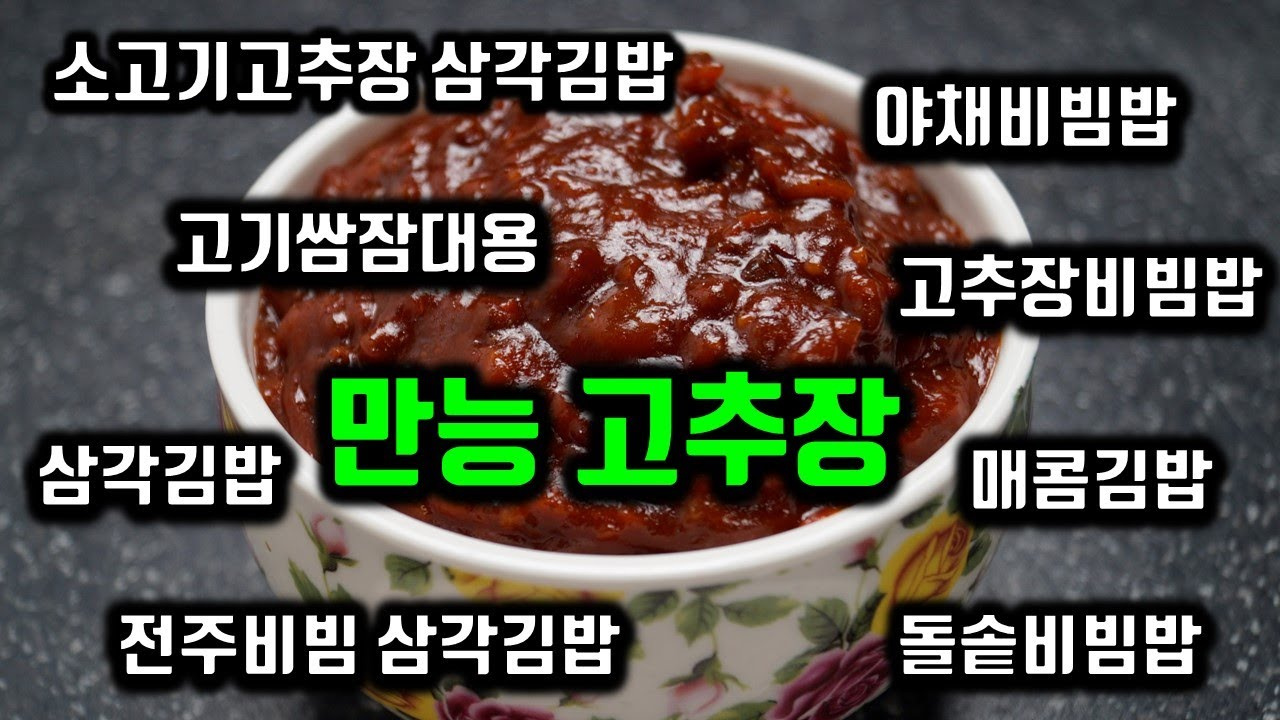Beef and Korean Chili Paste (Gochujang) Sauce
The Ultimate Recipe for Savory Beef Gochujang Sauce – Perfect for Bibimbap, Ssamjang, and Rice Balls

This versatile beef and gochujang sauce is your secret weapon for quick and delicious meals! It’s perfect as a spicy and sweet seasoning for bibimbap, a flavorful alternative when you’re tired of regular ssamjang (dipping sauce), or even as a filling for spicy rice balls. Make a batch and enjoy a week of effortless side dishes. Simply mix with rice, wrap in seaweed for flavorful rice rolls, or use as a topping for a delightful meal.
Main Ingredients- 100g Ground Beef (lean cut recommended)
- 40g Green Onion (white parts preferred)
- 1/2 medium Onion (approx. 100-120g)
- 1 Tbsp Cooking Oil (approx. 6g)
- 1 Tbsp Sesame Oil (approx. 6g)
- 1 Tbsp Minced Garlic (approx. 20g)
- 1 Tbsp Gochugaru (Korean chili flakes, approx. 7g; adjust to spice preference)
Seasoning Ingredients- 6 Tbsp Gochujang (Korean chili paste, approx. 180g; store-bought recommended for consistent flavor)
- 1 Tbsp Jerae Doenjang (traditional Korean soybean paste, approx. 30g; adds depth)
- 1 Tbsp Oyster Sauce (approx. 12g; for umami boost)
- 2 Tbsp Sugar (approx. 20g; adjust sweetness)
- 1 Tbsp Honey (approx. 16g; for shine and smoothness)
- 100g Galbitang Broth (Korean beef short rib soup broth) (or 100g water + 2-3g beef bouillon powder)
- 6 Tbsp Gochujang (Korean chili paste, approx. 180g; store-bought recommended for consistent flavor)
- 1 Tbsp Jerae Doenjang (traditional Korean soybean paste, approx. 30g; adds depth)
- 1 Tbsp Oyster Sauce (approx. 12g; for umami boost)
- 2 Tbsp Sugar (approx. 20g; adjust sweetness)
- 1 Tbsp Honey (approx. 16g; for shine and smoothness)
- 100g Galbitang Broth (Korean beef short rib soup broth) (or 100g water + 2-3g beef bouillon powder)
Cooking Instructions
Step 1
First, finely mince the green onions, focusing on the white parts for a milder, sweeter flavor.

Step 2
Next, finely dice the onion. Aim for consistent, small pieces to ensure they cook evenly and quickly.

Step 3
Heat a pan over medium heat and add the cooking oil and sesame oil. If you prefer not to fry the sesame oil, you can use only cooking oil. The combination adds a wonderful nutty aroma.

Step 4
Once the oil is hot, add the diced onion and stir-fry over medium-high heat for about 1 minute until it becomes slightly translucent. Then, add the minced garlic and cook for another 30 seconds until fragrant, being careful not to burn the garlic.

Step 5
Add the minced green onions and ground beef to the pan.

Step 6
Break up the ground beef with your spatula and stir-fry for about 2 minutes, ensuring it’s evenly cooked and about 80% done. Don’t let the meat clump together.

Step 7
Stir in the gochugaru (Korean chili flakes) and continue to cook for another 30-40 seconds until the beef is fully cooked through. Stirring constantly prevents the chili flakes from burning and brings out their flavor.

Step 8
Turn off the heat temporarily and add the gochujang. Using store-bought gochujang will provide a more consistent and richer flavor profile. If using homemade gochujang, you may need to adjust seasoning.

Step 9
Add the traditional doenjang (soybean paste). This adds a wonderfully deep and savory dimension to the sauce.

Step 10
Stir in the oyster sauce for an extra layer of umami and a hint of sweetness.

Step 11
Add the sugar for sweetness. If you prefer a less sweet sauce, you can reduce it to 1 tablespoon. Then, stir in the honey for a glossy finish and smooth texture. Any type of wildflower honey will work well.

Step 12
Turn the heat back on to medium-low. Stir everything together and let it simmer gently for about 2 minutes. This allows the flavors to meld together beautifully.

Step 13
Now, add the liquid to adjust the consistency. Use the galbitang broth if you have it. Alternatively, you can use 100ml of water mixed with 2-3g of beef bouillon powder for a similar savory base. Vegetable broth can also be used.

Step 14
Stir well to combine everything and cook for another 1-2 minutes. This helps the sauce thicken and flavors to fully penetrate the ingredients.

Step 15
To check for the perfect consistency: spoon a little sauce onto your spoon and tilt it. The sauce should fall off in thick, slow drops, indicating it has reached the desired thickness.

Step 16
This delicious beef gochujang sauce is wonderful spooned over a bowl of hot white rice for a simple yet incredibly satisfying meal.

Step 17
For a special treat, spread a generous amount of the sauce onto a sheet of seaweed, top with rice, and roll it up. It’s like a super-concentrated, spicy version of a premium convenience store bibimbap rice roll!

Step 18
You can also shape it into a small ball and lightly wrap it with seaweed for a delightful bite. Use it as a topping for vegetable bibimbap or as a flavorful alternative to regular ssamjang when enjoying grilled meats. Enjoy its versatility!



